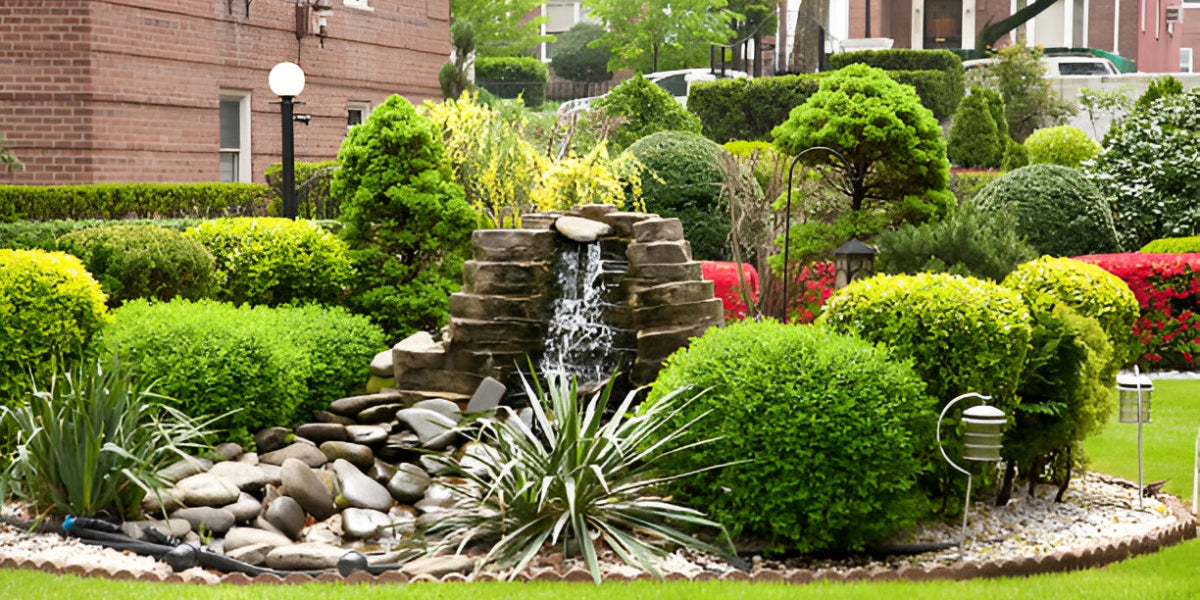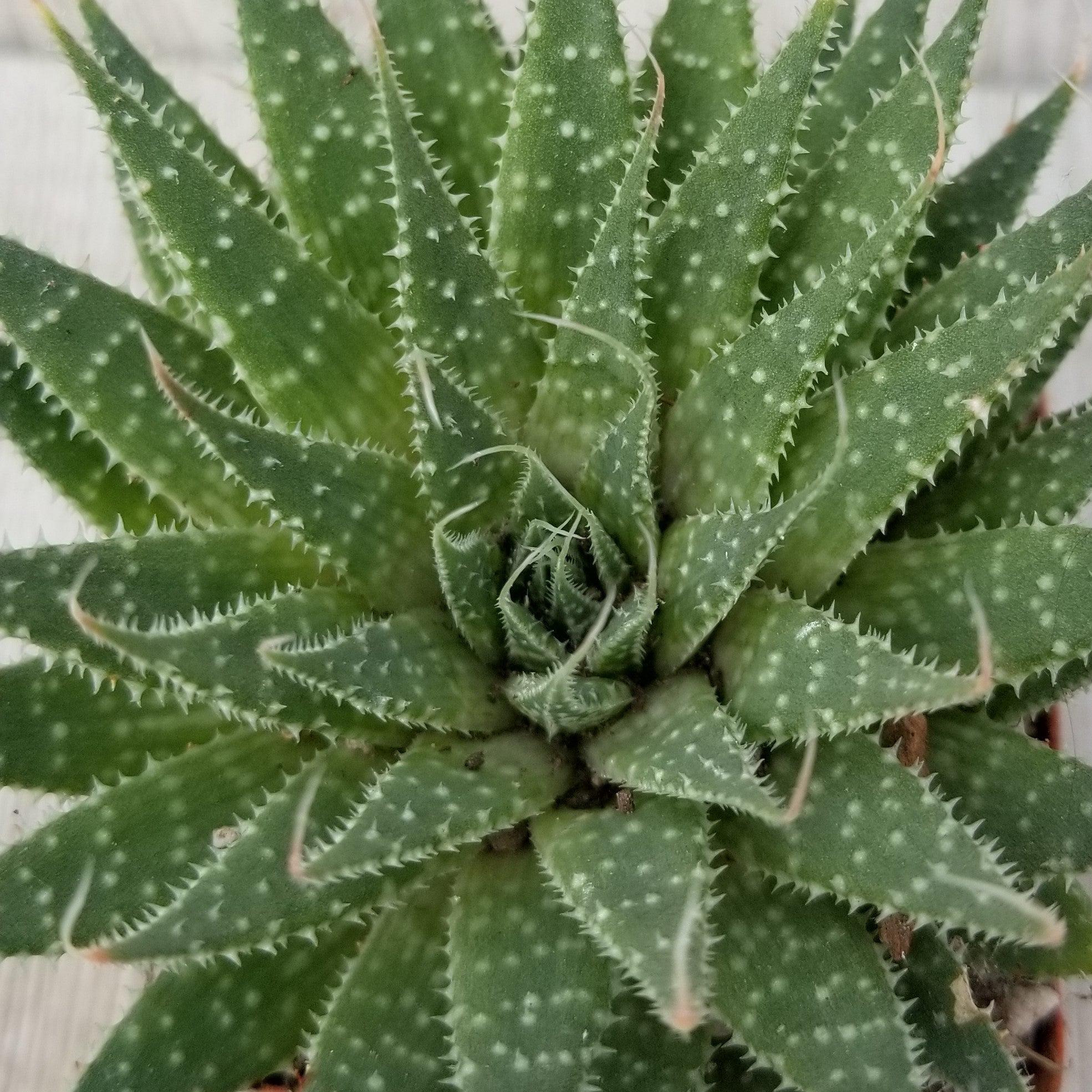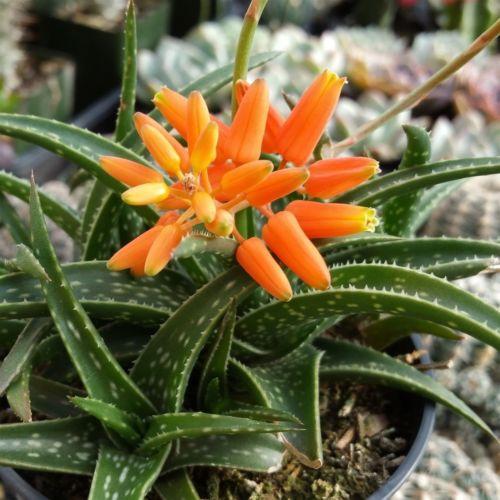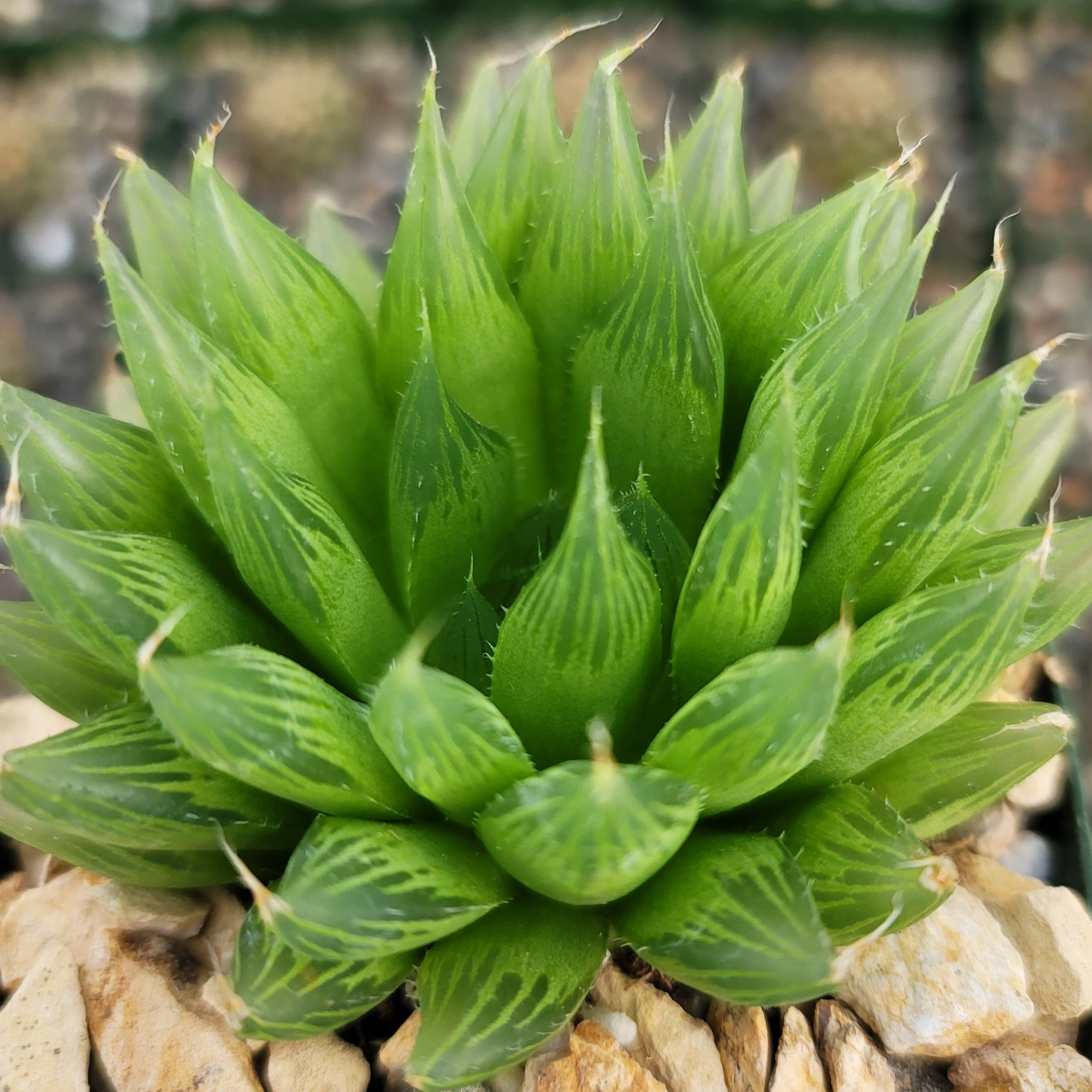String of Dolphins 'Care and Growing Guide' - Everything You Need to Know!
Updated: January 28, 2025

The String of Dolphins (sometimes called Dolphin Necklace) is a popular hanging and trailing succulent that adds a unique touch to your space. The leaves of the string of dolphin's plant are shaped like miniature dolphins with a gray-green color and a glossy texture.
This cute, adorable succulent has leaves that look like a pod of jumping or flying dolphins. This trailing succulent plant is a hybrid between Senecio rowleyanus (a string of pearls plant) and Senecio articulatus (a candela plant or hot dog cactus), combining the best features of both trailing plants in the Asteraceae family.
All About String of Dolphins Plant
Hailing all the way from Southwest Africa, a string of dolphins thrives in dry, Mediterranean climates, making them ideal for milder climates like California and indoor plants in hanging baskets.
The foliage of the adorable succulent is characterized by:
- Iconic dolphin-shaped leaves.
- The leaves have long-hanging tendrils.
- A dusty blue-green color.
The String of Dolphins plant, also known as Curio peregrinus (formerly known as Senecio peregrinus), is a unique and charming succulent that resembles a pod of leaping dolphins.

Each leaf in a plant has a translucent "leaf window" that enables sunlight to penetrate the interior, enhancing its ability to withstand low light conditions.
It can reach lengths of up to 3 feet and heights of 6 inches, and it looks great spilling out of a hanging basket, trickling down over bookshelves, or even on the edge of a stair rail.
The String of Dolphins flowers are small and white with attractive cinnamon-scented blooms.
The quality of the flowers it produces during the spring and summer is largely determined by the care it received during its previous winter dormancy.
In our String of Dolphins Succulent Care & Buyers Guide below; we'll explore everything from its growth habits to how to propagate it. Whether you're a seasoned succulent collector or just starting out, read on for all you need to know about caring for this delightful desert dweller!
Is String of Dolphins Toxic to Pets?
The String of Dolphins plant can indeed be mildly toxic to cats and dogs if ingested in large amounts. If your furry friends happen to munch on it, they may experience symptoms such as vomiting or an upset stomach.
However, it's important to note that most pets won't really eat the plant or consume enough to cause serious harm. So, while it's always a good idea to keep an eye on your pets around plants, you can generally breathe a little easier knowing that the string of dolphins isn't usually a major concern for their safety.

String of Dolphins Care
The string of dolphins is a low-maintenance and easy-to-care-for indoor plant. These dolphin succulents are drought-tolerant, easy to propagate, and require no special care or maintenance. Their plump leaves retain water, making them versatile. It's perfect for plant enthusiasts of all levels, whether you're a beginner or an experienced gardener. You'll love how effortlessly this trailing or hanging plant adds a touch of whimsy and greenery to your space!
Quick Reference

Bloom Season
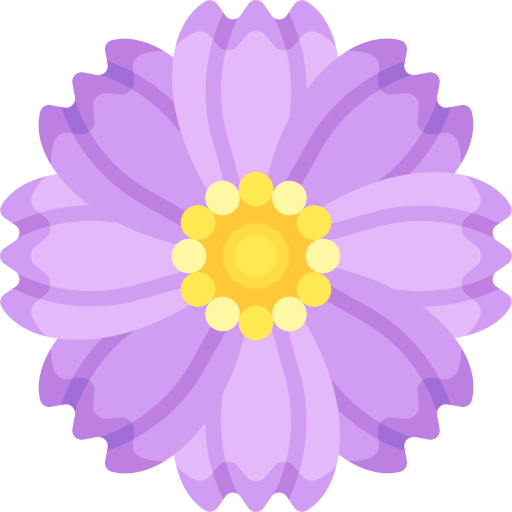
Flower Color

Growth Rate

Hardiness Zone

Mature Size

Plant Type

Sun Exposure

Toxicity

Watering Needs
Quenching the Thirst: How to Water Your String of Dolphins for Optimal Growth
When it comes to watering the String of Dolphins plant, it's important to find the right balance. Like other succulents, your dolphin plant can store water in its plump leaves and stems.
In the spring to fall, during their active growth period, watering should be done once per week for this drought tolerant plant. When the weather is colder in winter during its dormant period, ensure that you water it only once or twice every month.
The dolphin plant requires the right amount of water to survive. If water accumulates at the plant's roots, they will rot, and in no time, you will find a string of dolphins dying. So, allow the soil to dry out between waterings, and then give it a thorough watering, ensuring that excess soil moisture drains out.

Remember, to avoid overwatering, as it can lead to root rot, so it's better to underwater than overwater. It's always a good idea to observe the succulent plant and adjust your watering routine based on its specific needs.
Understanding the Lighting Needs of the String of Dolphins Plant
Sunlight is another crucial aspect of the strings of dolphin plant care. When growing indoors, it loves the bright natural morning sun, which is indirect. It's best to place it near a south-facing window that receives bright, filtered sunlight for a few hours each day. If necessary, you can also place them under LED grow lights during the winter. However, direct sunlight can be too intense for this delicate dolphin succulent plant and may cause sunburn or leaf damage.
When grown outdoors, the String of Dolphins enjoys bright, indirect sunlight or partial shade.
It can tolerate some direct sunlight, particularly during the morning or late afternoon, but be cautious of intense midday sun as it may cause sunburn on the leaves.
If you live in a region with hot summers, providing some afternoon shade can help protect the plant from excessive heat.
Keep in mind that the String of Dolphins is not frost-tolerant, so if you experience freezing temperatures, it's best to bring it indoors or provide adequate protection during the winter.

If you notice the leaves turning yellow or brown, it may be a sign that your Senecio plant is getting too much direct sunlight. On the other hand, if it is not getting enough bright light, it may become leggy and lose its vibrant green color.
So, finding that perfect balance of bright, indirect light is key to keeping your string of dolphins happy and healthy.
Unveiling the Ideal Soil & Fertilizer for Your String of Dolphins
The most important String of Dolphin’s care rule is that you need to plant in a well-draining soil mix. It is best to order a standard succulent, sandy soil mix for dolphin plant pots and gardens. Ensure that the pot is of an appropriate size and has adequate drainage holes at the bottom for water drainage. The potting soil-to-sand soil mix ratio is 3:1.
Instead, make or buy a well-draining potting mix, or ideally use our specialized succulent potting mix that contains 5 natural substrates and mycorrhizae to promote the development of a strong root system that helps your succulent thrive.

When it comes to fertilizers, you don't need to use typical fertilizers to keep your dolphin succulent plant alive. However, it is advised to fertilize them at least once a year in the spring at the start of the blooming season with natural NPK-balanced (5-10-5) fertilizer.
Avoid overfertilizing the soil to prevent the dancing dolphin plant from losing its adorable, distinctive shape.
Optimal Hardiness Zone, Temperature, & More for String of Dolphins
When growing indoors, the string of dolphin's plant prefers temperatures between 60-80°F. It can tolerate slightly freezing temperatures as low as 40 °F, but it's best to avoid extreme cold or frost.

For outdoor cultivation, this dolphin succulent is generally hardy in USDA zones 9–11. These zones typically have mild to warm temperatures throughout the year, making them ideal for this tropical dolphin succulent plant.
It's important to note that the string of dolphins is not frost-tolerant, so if you experience freezing temperatures, it's best to bring it indoors or provide adequate protection during the winter.
In terms of humidity, this string of dolphins appreciates moderate to high humidity levels, similar to its natural tropical habitat. If you live in a drier climate, you can increase the humidity around your Senecio succulent by misting it with water or placing a tray of water nearby.
By providing the right temperature and humidity conditions, you'll create a comfortable environment for your string of dolphins' string plants to thrive!
Potting & Repotting of String of Dolphins
The string of dolphins is a trailing succulent that can tolerate root-bound conditions and doesn't require regular repotteling. To encourage blooms, keep the plant slightly root-bound. However, repotting it every few years and increasing the pot size is recommended.
Proper drainage holes prevent root rot and waterlogged soil. A string of dolphins thrives in plastic and terracotta pots, with terracotta being preferred for its moisture absorption properties.
Propagating String of Dolphins
For healthy growth, a string of dolphins can be propagated with a sharp knife from stem cuttings with 2-3 nodes along the stem located at the leaf's emerging points.
Soil propagation
- Propagating a string of dolphins is quite simple. Using a healthy stem cutting is the most straightforward answer to 'How to grow a String of Dolphins.'
- Place the cutting on the soil and keep misting it once every day.
- In some time, you will notice new root growth at the nodes.
Water Propagation
- You can propagate a string of dolphins in water using stem cuttings.
- Take a strand of the string about 4 inches tall and place it in a jar filled with distilled or rainwater.
- Once it develops roots, you can transfer the plant to a well-drained potting mix.
Pests & Common Problems of String of Dolphins
Generally, String of Dolphins is an easy-going indoor plant with very few challenges. The most common pests are mealybugs and scale insects, which can cause some white patches or brown spots on the leaves respectively. If you find any of these pests on your dolphin plant, don't fret.
There are easy ways to get rid of them. Here are some common pests and problems that the String of Dolphins plant may encounter:
Mealybugs: These small, white, cottony insects can infest the String of Dolphins plant and cause damage. Use a cotton swab dipped in rubbing alcohol to remove them or use an insecticidal soap.
Spider mites: These tiny pests can create webbing and cause yellowing or stippling on the leaves. Regularly misting your plant and keeping the humidity levels up can help deter spider mites.
Root rot: Overwatering or poor drainage can lead to root rot, which can cause the dolphin's plant's roots to become mushy and rot. Ensure that the soil is well-drained and allow it to dry out between waterings.
Leaf drop: Sudden changes in temperature, overwatering, or underwatering can lead to leaf drop. Maintain consistent watering and temperature conditions to prevent this problem.
By being aware of these potential pests and problems, you can take proactive measures to keep your String of Dolphins plants healthy and thriving!

Where to Buy a String of Dolphins?
When it comes to buying a string of dolphins plant, unless you have a local nursery that specializes in cactus and succulents; then you may have a hard time finding string of dolphin near you. Planet Desert is your easiest and best option if you're looking to buy affordable succulents online and have them conveniently shipped right to your door!
Here is the link to our product page for String of Dolphins. Here at Planet Desert, we have a large selection of over 500 cacti & succulents in stock and we guarantee they will arrive happy and healthy.
Growers Reference Guide - String of Dolphins Plant
| Bloom Season | Spring, Summer |
|---|---|
| Botanical Name | Senecio peregrinus |
| Common Name | String of dolphins, dolphin plant, flying dolphin |
| Dormancy | Winter |
| Family | Asteraceae |
| Flower Color | White |
| Genus | Senecio |
| Growth Habit | Trailing, Hanging |
| Growth Rate | Slow |
| Hardiness Zone | 9, 10, 11 |
| Mature Size | 3 ft. long, 6 in. tall |
| Native Area | South Africa |
| Plant Type | Perennial succulent |
| Propagation | By stem cuttings |
| Resistance | Drought tolerant, pest resistant, heat tolerant |
| Soil PH | 6.5, Acidic, Neutral |
| Soil Type | Succulent potting mix soil |
| Special Features | Unique foliage |
| Sun Exposure | Full sun, partial shade |
| Toxicity | Mildly toxic to humans, mildly toxic to pets (Keep away from children) |
| Watering Needs | Low |
Final Thoughts
Overall, the String of Dolphins (Senecio peregrinus) is a captivating succulent that adds a playful and whimsical touch to any plant collection. With its unique dolphin-shaped leaves and trailing vines, it's sure to be a conversation starter. While it's important to keep in mind that the plant can be mildly toxic to pets if ingested in a large amount, with proper care and placement, it can thrive and bring joy to your space. So, if you're looking for a succulent plant that combines beauty and charm, the String of Dolphins is an excellent choice!
Other popular hanging succulents are a string of pearls, a string of fish hooks, and a string of bananas, which you may already be familiar with.
Frequently Asked Questions
-
Why is my String of Dolphins Dying?
There could be several reasons why your string of dolphins is dying. It is important to consider factors such as water quality, temperature, and potential diseases that could be affecting them. A dry dolphin string means that it is receiving too much water or too little water. It is quite common in succulents. For example, paddle plant leaf curling usually means improper watering or light exposure. Additionally, inadequate nutrition or improper care may also contribute to their decline.
-
How Do I Care for my String of Dolphin Plants?
Remember these tips for Senecio peregrinus care:
- The first important tip for Senecio care is to offer it bright indirect sunlight.
- Do not over or underwater.
- The stringy succulents need well-drained soil.
- These are cascading cactus plants. Give them the space to cascade down.
- Fertilizers can be used once or twice a year during the growing season. The dormant months are the winter months.
-
How Often Do I Water my String of Dolphins?
The dolphin-shaped plant should be watered at least two times a week during growing seasons, typically in the spring and early fall. When it is cold or in the winter dormant period, the watering frequency should be reduced to just once or twice a month.
-
Does String of Dolphins Need Full Sun?
The String of dolphins, like other succulents, prefer bright, indirect light. They don't need full sun but enjoy a good balance of sunlight and shade. Placing them in a spot with partial sun or filtered light would be ideal for their growth and health. It's important to protect them from intense, direct sunlight as it can harm their leaves. So, find a cozy spot with just the right amount of light for your string of dolphins!
-
Is the String of Dolphins Rare?
The string of dolphins (Senecio peregrinus) is considered a relatively rare succulent. Its unique leaf shape resembling leaping dolphins with curved stems makes it a sought-after plant among succulent enthusiasts. However, availability may vary depending on your location and local nurseries. The right place to buy these succulents is the online medium. Search 'dolphin succulents near me.' Planet Desert is the best place to get the string of dolphin plants for sale online. Keep an eye out for it at specialty plant stores or online retailers that specialize in succulents.
-
Is the String of Dolphins the Same as a String of Bananas?
The difference between a string of bananas and a string of dolphins is in the shape of their leaves. While both plants belong to the same Senecio genus and have trailing vines, the string of bananas has curved, banana-shaped leaves, while the string of dolphins has leaves that resemble leaping dolphins. It's fascinating how nature can create such unique and diverse plant forms!
-
Is the String of Dolphins Prefers Indoors or Outdoors Cultivation?
A string of dolphins can be grown both indoors and outdoors, depending on your climate and preferences. If you live in a region with a mild climate in USDA zones 9-11, you can place your string of dolphins outdoors in a spot with partial sun or filtered light. If you prefer to keep it indoors, make sure to provide it with bright, indirect light near the window. Just remember to adjust watering and care accordingly based on its location.




